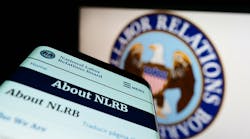If you’re like me, you’re sick of hearing about skyrocketing fuel prices, an economy worsening by the day and a disastrous labor shortage on the way.
I want to offer you a silver lining. Of all businesses, those involved in material handling are best equipped to survive whatever the future brings. Flexible technologies that address daunting challenges are emerging all the time.
Consider the distribution facility run by the Travis Association for the Blind, also known as Austin Lighthouse. Located in Austin, Texas, the pick-pack operation plays a critical role in the distribution of uniforms and accessories for the U.S. military. The majority—75%—of the employees are blind or visually impaired.
This is no accident. Austin Lighthouse is one of several community-based organizations created to help people who are blind or have other disabilities find employment. Organi-
zations like Austin Lighthouse were created in response to the Javits-
Wagner- O’Day Act Congress passed in the 1970s to help people with disabilities find work and become productive members of society.
“Our main mission is to provide gainful employment for the visually impaired and totally blind,” says Greg Hernandez, distribution/ warehouse manager at Austin Lighthouse. “The workers pick orders, bring them to a production line, put them through a quality-control function and then take them to packing and shipping stations.”
All this is possible with technology. Greg purchased ILS: Integrated Logistics Solutions from Manhattan Associates because this WMS came with special features, including voice technology and barcode scanners. “We used a scanning device from Symbol and a voice device from Vocollect and blended the two concepts together to help the visually impaired,” says Darryl Barr, director of product management at Manhattan Associates.
Previously, visually impaired workers were issued paper pick tickets, and blind employees were given tape recorders that would play verbal instructions. As the operation expanded from one 50,000-square foot facility to four buildings totaling 385,000 square feet, Greg needed a more efficient way to pick orders.
Today, the Vocollect voice-operated, radio- frequency unit issues verbal commands telling workers
Senior Editor mary.aichlmayr
@penton.com
where to go to pick orders. Braille in the aisles, as well as an orientation program that teaches workers how to navigate through the warehouse, enable blind or visually impaired employees to get to the locations. Once there, they scan a barcode, and the voice unit responds verbally if the check digit is wrong.
This process is different from typical voice-directed pick operations. According to Darryl, employees would normally read check digits into the device to ensure accuracy. “Voice direction is the major value add we bring,” he says.
Greg adds that computer workstations at the quality-control, packing and shipping stations are equipped with software called Jaws. This technology includes a speech synthesizer that ‘reads’ information aloud to blind employees. For the visually impaired, ZoomText software magnifies data on the screen.
Thanks to the flexible technology available for material handling, the workers at Austin Lighthouse can do their jobs as accurately and efficiently as anyone else. The creative solutions our industry offers can help you overcome some of your biggest challenges, too. Now, there’s some good news for a change.




